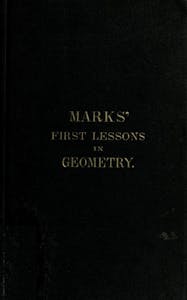How it ever came to pass that Arithmetic should be taught to the extent attained in the grammar schools of the civilized world, while Geometry is almost wholly excluded from them, is a problem for which the author of this little book has often sought a solution, but with only this result; viz., that Arithmetic, being considered an elementary branch, is included in all systems of elementary instruction; but Geometry, being regarded as a higher branch, is reserved for systems of advanced education, and is, on that account, reached by but very few of the many who need it.
The error here is fundamental. Instead of teaching the elements of all branches, we teach elementary branches much too exhaustively.
The elements of Geometry are much easier to learn, and are of more value when learned, than advanced Arithmetic; and, if a boy is to leave school with merely a grammar-school education, he would be better prepared for the active duties of life with a little Arithmetic and some Geometry, than with more Arithmetic and no Geometry.
Thousands of boys are allowed to leave school at the age of fourteen or sixteen years, and are sent into the carpenter-shop, the machine-shop, the mill-wright's, or the surveyor's office, stuffed to repletion with Interest and Discount, but so 4utterly ignorant of the merest elements of Geometry, that they could not find the centre of a circle already described, if their lives depended upon it.
Unthinking persons frequently assert that young children are incapable of reasoning, and that the truths of Geometry are too abstract in their nature to be apprehended by them.
To these objections, it may be answered, that any ordinary child, five years of age, can deduce the conclusion of a syllogism if it understands the terms contained in the propositions; and that nothing can be more palpable to the mind of a child than forms, magnitudes, and directions.
